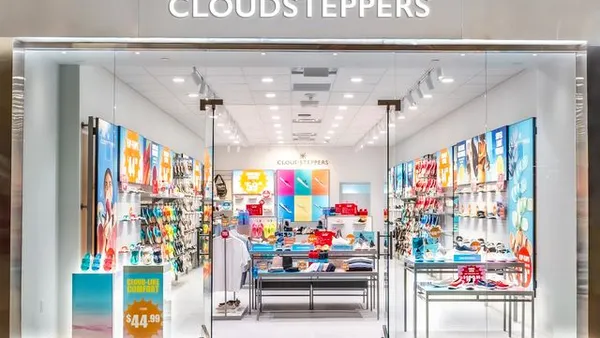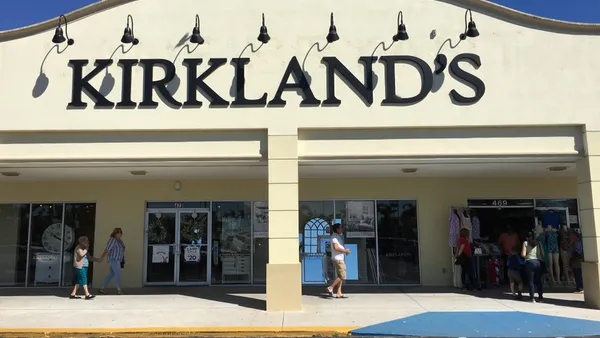Dive Brief:
- Reporting against a period last year when its stores were closed and sales were down, Best Buy's comparable sales grew 37.2% across its business in the first quarter of 2021.
- Best Buy has progressed beyond its pre-pandemic performance as well. Against 2019's performance, Best Buy's top-line sales grew more than 27%.
- CEO Corie Barry called customer demand "extraordinarily high" in Q1, driven by government stimulus and consumer focus on their homes, including working, learning, cooking, entertaining, redecorating and remodeling, Barry said in a press release.
Dive Insight:
Best Buy enjoyed a blockbuster quarter on most metrics. Along with blistering sales growth, the company's operating income more tripled from last year at this time, coming in at $769 million in Q1.
Obviously, much of the growth is making up for ground Best Buy lost in Q1 2020, when it closed stores due to COVID-19's rise and pivoted to curbside fulfillment at its stores. The retailer's growth against 2019, though, shows the underlying health of Best Buy at the moment, as well as a robust market in the sector.
Best Buy experienced growth across its product categories, with comp sales up 27.3% in computing and mobile, up 45.9% in consumer electronics, up 66.6% in appliances, up 32.1% in entertainment and up 33.2% in services.
Much of that growth occurred in stores, as digital comp sales were up 7.6% domestically, which looks paltry against the 155.4% growth last year at this time when consumers took to the internet to make purchases while stuck inside. Still, that figure represents growth on top of last year's wide leap in digital sales.
GlobalData Managing Director Neil Saunders noted in email comments that stimulus checks likely helped drive purchases of big-ticket electronic purchases, as did a rash of home remodeling put off during the pandemic.
On a conference call, Barry said that the company sees many changes in shopping behavior in response to the pandemic as "sudden and lasting" as customers lean into shopping across retail channels. Demand, too, is likely to remain strong with the pandemic deepening consumers' relationship with and dependence on technology.
Executives did note, though, that the second half of this year could be shaped by shifts in consumer spending back to eating out, traveling and other experiences cut off by the pandemic.
Analysts also credited Best Buy's operations and positioning with its performance. Moody's Vice President Charlie O'Shea said that the company's Q1 numbers are "a reflection of the quality of Best Buy's merchandising, with a product assortment that continues to resonate with a growing customer base as evidenced by strength across all product categories, as well as outstanding execution ability as it continues as one of the global leaders in multi-channel retail."
Saunders noted that Best Buy today is a more digitally-driven business than pre-pandemic, even as its digital sale penetration fell slightly in Q1. That dip "underlines the importance of stores in its ecosystem," Saunders said. "The desire to sometimes shop in-person for electronics underlines the importance of Best Buy's omnichannel model, which we believe is one of the most advanced in retail."
As it tries to adapt to a hybrid shopping environment, Best Buy is testing new store models that reduce sales floor space in favor of a larger backroom that it can use to fulfill orders efficiently.
Best Buy is also looking at size when it comes to experimenting with store models, including 15,000-square-foot, 25,000-square-foot and 30,000-square-foot stores, as well as outlet stores.















